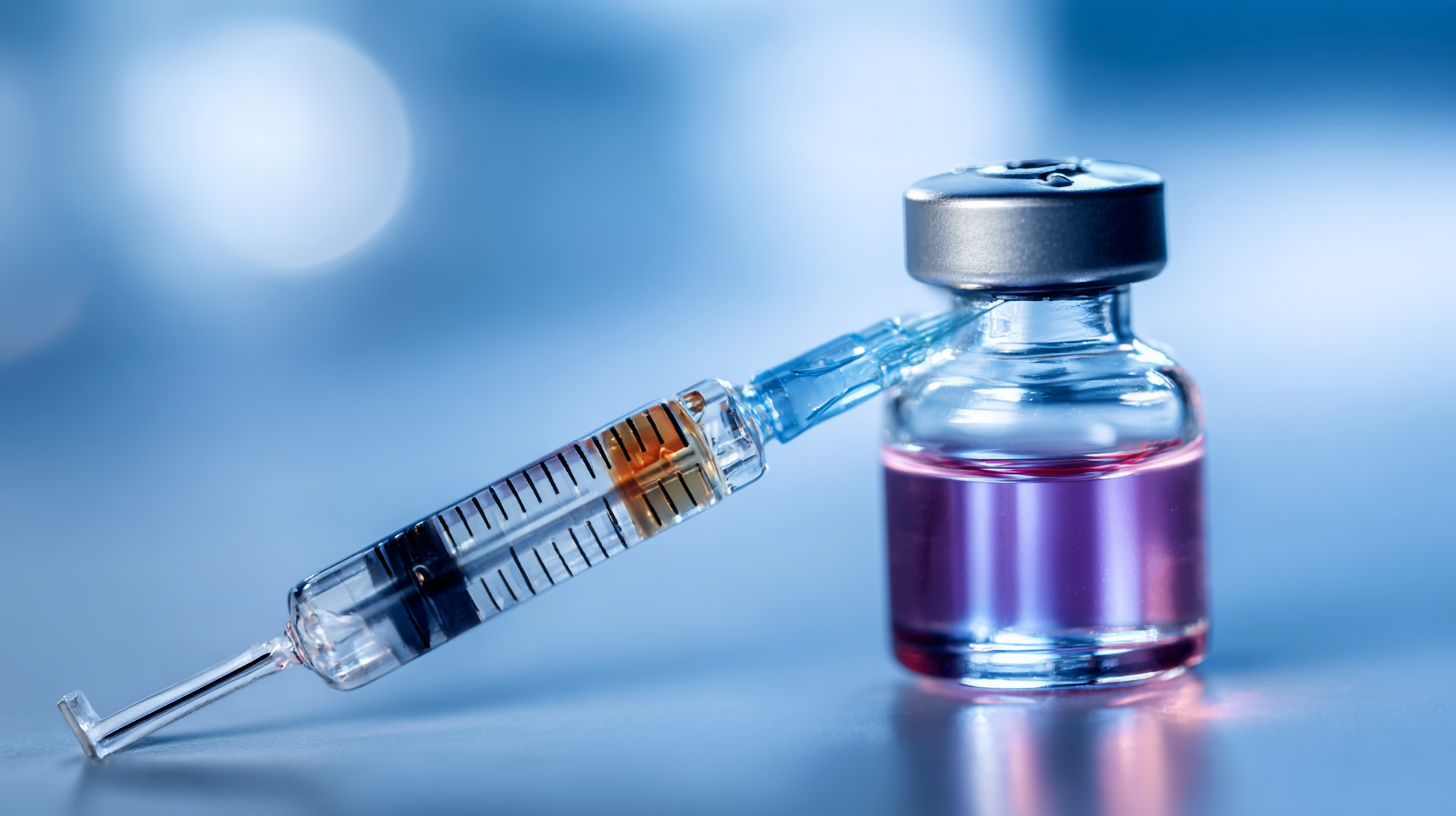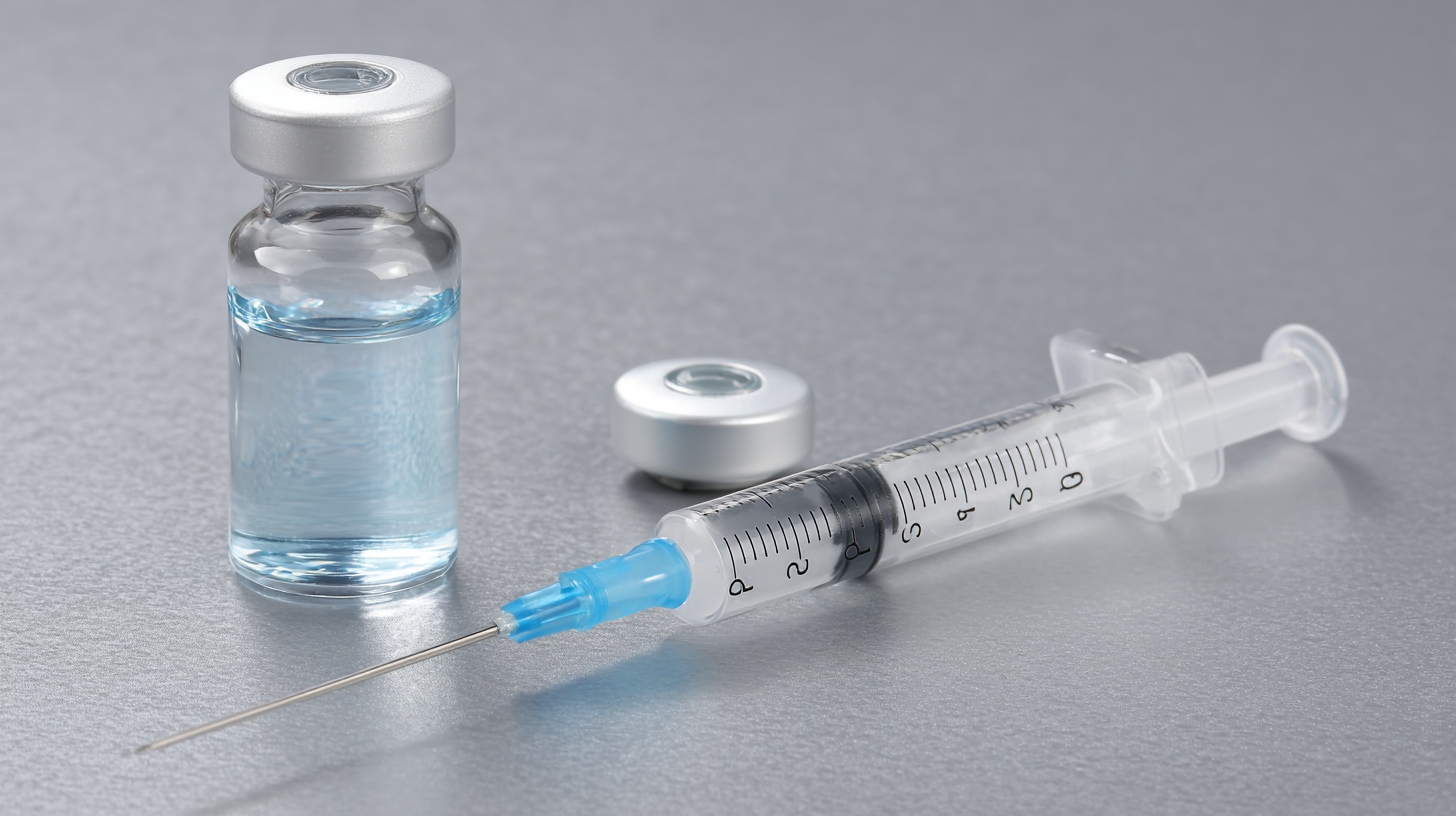The management of pain has evolved significantly in recent years, with novel therapies and medications emerging to address a growing patient demand for effective relief. Among these therapies, Lidocaine Injection has gained prominence, recognized for its rapid analgesic effects and versatility in treating various types of pain, including acute and chronic conditions. According to a report by MarketsandMarkets, the global pain management market is projected to reach USD 78.6 billion by 2025, driven in part by the increasing prevalence of neuropathic and musculoskeletal pain, highlighting an urgent need for efficacious management options.

Lidocaine, a local anesthetic, has been a staple in pain management for decades, with its applications ranging from dental procedures to the treatment of conditions such as postherpetic neuralgia and fibromyalgia. Recent studies indicate that Lidocaine Injections can provide significant pain relief, with efficacy rates reported as high as 70% in certain populations. As the industry continues to innovate, healthcare providers are exploring not only the utility of Lidocaine but also potential alternatives and combinations to enhance patient outcomes. This article will delve into the top ten Lidocaine Injection products available in 2025, evaluating their effectiveness, safety profiles, and alternative therapies to provide a comprehensive resource for clinicians and patients alike.
Lidocaine injections have become an essential tool in pain management, offering quick relief for various conditions. Understanding the effectiveness of these products is crucial for both patients and healthcare providers. In evaluating the top 10 lidocaine injection products for 2025, factors such as onset time, duration of action, and patient feedback play a pivotal role. Studies have shown that lidocaine not only alleviates localized pain but also enhances the overall quality of life for chronic pain sufferers.

Tips: When considering lidocaine injections, consult with your healthcare provider regarding your specific pain management needs. It’s also helpful to discuss any potential side effects or alternative treatments available, ensuring you choose the best option for your situation. Additionally, keep track of your response to the injection, as this information can guide future treatments.
Another aspect to consider is the availability of alternative pain management options. While lidocaine injections are effective, patients may benefit from combining them with physical therapy, acupuncture, or other non-invasive treatments. This holistic approach not only addresses immediate pain relief but also targets the underlying causes, leading to more sustainable results in managing pain.
The management of pain has increasingly relied on a variety of pharmacological interventions, with lidocaine injections and opioids standing out as significant options. Lidocaine, a local anesthetic, blocks nerve signals in the targeted area, offering rapid relief that is particularly effective for localized pain. Its use in pain management is especially beneficial for patients looking to avoid the systemic effects associated with opioids, which include sedation and potential dependency. Research indicates that lidocaine can provide effective short-term pain relief, making it a viable choice for certain procedures and acute pain conditions.
In contrast, opioids are often prescribed for moderate to severe pain, particularly in chronic conditions. They act on the central nervous system to alter the perception of pain, but their efficacy comes with a higher risk of side effects, including addiction and overdose. While opioids are effective for many patients, the growing concerns about their safety and the opioid crisis have prompted healthcare professionals to explore alternatives such as lidocaine injections. A comparative analysis reveals that while both options have their merits, lidocaine presents a compelling case for specific applications in pain management, especially for patients seeking to minimize opioid exposure.
| Product Name | Active Ingredient | Effectiveness (1-10) | Duration of Relief (hours) | Side Effects | Alternatives |
|---|---|---|---|---|---|
| Lidocaine Hydrochloride | Lidocaine | 9 | 2-5 | Dizziness, Nausea | Ibuprofen, Acetaminophen |
| Lidocaine Plus Adrenaline | Lidocaine + Epinephrine | 8 | 3-6 | Increased Heart Rate, Anxiety | Steroidal Injections |
| Lidocaine Infusion | Lidocaine | 7 | 4-8 | Confusion, Fatigue | Ketamine, Gabapentin |
| Lidocaine Patch | Lidocaine | 6 | 12-24 | Skin Irritation, Rash | Capsaicin Cream |
| Lidocaine Gel | Lidocaine | 7 | 2-4 | Burning Sensation | NSAIDs, Acupuncture |
| Bupivacaine | Bupivacaine | 8 | 4-8 | Hypotension, Drowsiness | Opioids, Nerve Blocks |
| Ropivacaine | Ropivacaine | 8 | 6-10 | Nausea, Anxiety | Oral Pain Relievers |
| Prilocaine | Prilocaine | 7 | 3-7 | Methemoglobinemia, Numbness | Tramadol, Physical Therapy |
| Procaine | Procaine | 5 | 2-4 | Allergic Reactions | Alternatives not specified |
| Tetracaine | Tetracaine | 6 | 2-4 | Skin Reactions | Phenylbutazone |
Alternative pain management techniques have gained significant attention as patients seek effective methods beyond traditional injections. Among these options, physical therapy stands out as a cornerstone strategy. Tailored exercises and therapeutic interventions can help strengthen muscles, improve flexibility, and enhance mobility, allowing patients to manage pain more effectively. Techniques such as manual therapy, ultrasound, and electrical stimulation also contribute to pain reduction and recovery.
Mindfulness and cognitive-behavioral therapy (CBT) are additional approaches that focus on the psychological aspects of pain. Mindfulness practices encourage patients to develop awareness and acceptance of their pain, which can alter their perception and experience. CBT, on the other hand, equips individuals with coping strategies and techniques to challenge negative thought patterns associated with chronic pain, ultimately leading to improved emotional well-being.
Moreover, complementary therapies such as acupuncture and massage therapy offer holistic alternatives. Acupuncture stimulates specific points on the body, promoting natural healing and pain relief, while massage therapy enhances circulation and reduces muscle tension. These non-injection options not only address pain but also support overall physical and mental health, making them valuable components of a comprehensive pain management plan.
Emerging research indicates that lidocaine injections may provide benefits beyond traditional pain relief, particularly in the context of chronic pain management. Recent studies have highlighted the limited efficacy of various conventional treatments for conditions such as back and leg pain. For instance, steroid injections, commonly used for spinal stenosis, often yield minimal benefits compared to placebo, pointing to a need for more effective alternatives. In contrast, lidocaine has shown promise in various applications, including significant pain relief in youths suffering from acute migraines. This suggests lidocaine's potential as a versatile option for treating different pain conditions.

Moreover, emerging preclinical research is shedding light on lidocaine's possible role in cancer treatment, further broadening its therapeutic landscape. As demonstrated in recent interviews with leading experts, lidocaine's multifaceted mechanisms may target not only pain pathways but also underlying disease processes. This growing body of evidence underscores the importance of exploring lidocaine as a valuable tool for pain management, especially in cases where traditional treatments have proven ineffective. As the medical community refines its approach to pain management, lidocaine's potential benefits warrant further investigation and clinical application.
Lidocaine injections have emerged as a vital option for
pain management, particularly in the context of recovery from surgical procedures, such as cataract surgery.
Patients undergoing such operations often experience discomfort, and the effectiveness of lidocaine in alleviating post-operative pain has garnered significant attention.
Recent perspectives from patients highlight a general satisfaction with the outcomes of lidocaine injections. Many report a marked reduction in
pain levels and a quicker return to daily activities, indicating that these injections may play a crucial role in enhancing the overall
recovery experience.
Moreover, patients appreciate the minimal side effects associated with lidocaine compared to other pain relief options.
This is particularly relevant for individuals who may be sensitive to certain medications or who wish to avoid opiates due to their addictive qualities.
Those who have received lidocaine injections for pain management following cataract surgery often express relief not only from immediate discomfort but also from
anxiety related to pain control, reinforcing the injection’s capacity to improve both physical
and psychological well-being during recovery.






